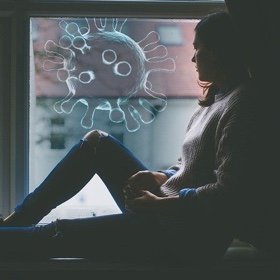
Perspectives from Rehana Kapadia, resident Cranial Osteopath at Shine, Church Street.
Written October 2020.
This has been, and continues to be a testing year, on so many levels. I feel my clinical practice has supported me, as much as I have endeavoured to support those that I treat.
While the focus of hospitals, epidemiologists and medical research has understandably been on reducing fatalities, managing admissions and producing a viable vaccine, during this pandemic, I have been applying core osteopathic principles and teaching, to work collaboratively, with homeopaths, acupuncturists, herbalists, qi gong and yoga practitioners, so that we can safely treat and advise patients. As ‘whole health’ practitioners, we have a valuable natural healing role to play, in significantly alleviating many of the symptoms and sequelae emerging with Covid-19, with our expansive knowledge base and resources, to support and protect community health.
I would like to share some links and guidelines for self-care to cover possible circumstances that we may currently find ourselves in:
· For those of us who may have already contracted covid-19 and recovered, we may still be left with a sense of anxiety on how best to navigate the ‘new normal’.
· For those of us that have become one of the increasingly significant number of people experiencing ‘long-covid’ also described as ‘long haulers’, who have found that they are not recovering in the expected timeframe, but continue to have symptoms on and off, for months afterwards (1,2) and need support.
· For those who have managed to stay well, but still feel apprehensive for our ourselves and our families, as we go into the second phase of this pandemic.
It is being recognised that this strain of coronavirus is not just ‘bad flu’ or pneumonia, but rather a multi-system disease, affecting the small blood vessels or arterioles in the lungs and an irregular immune response, which seems to trigger inflammatory ‘cytokine storms’ affecting the tissues in the cardio-vascular system, kidneys, digestive system, musculoskeletal and neurological systems, including the brain (3). More recently the condition of ‘long covid’ is being covered in the news, driven by support groups that have been forming online (4,5.)
The degree to which people are affected and their level of recovery is extremely variable.
Range of long covid symptoms: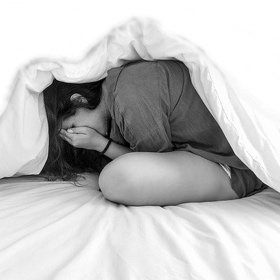
Loss of taste/ smell
prolonged fatigue
shortness of breath
brain fog
memory/attention deficit
anxiety
PTSD – post-traumatic stress disorder
depression
insomnia
chest pain, tightness
palpitations
chest heaviness
burning sensation in throat and/or chest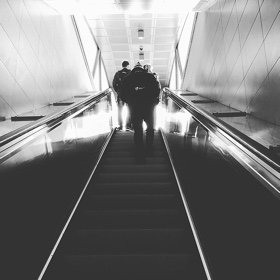
sore throat
bowel dysfunction
acid reflux
joint pains/contractures
muscle aches/weakness
nerve pain
pins and needles/ numbness
unable to climb stairs
impaired exercise tolerance
body temperature irregularity
skin on fingers puckering
Covid-19 and Medical Care
NICE (6) have announced that they will work with the Royal College of General Practitioners (RCGP) and the British Society for Rehabilitation Medicine (BSRM) led by Prof Lynne Turner-Stokes, to create a multi-disciplinary therapy approach, acknowledging the need for rehabilitative medical care, especially in addressing long covid(3).
Working collaboratively with the NHS and ‘whole health’ practitioners
Osteopaths are primary care practitioners and allied healthcare workers. We work in conjunction with the NHS and liaise with GPs to refer for further medical investigations, as and when necessary. Our governing (GOsc) and professional body (iO) are currently looking at ways we can work together, to support rehabilitative care, for covid patients.
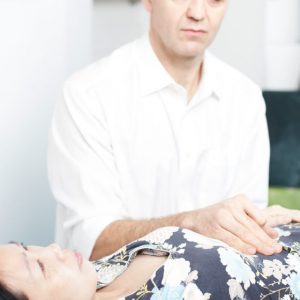 Osteopaths work on the person as a whole and are trained to work with people of all ages, to optimise their underlying health. We share these principles with other registered practitioners, such as acupuncturists, homeopaths, naturopaths and medical herbalists.
Osteopaths work on the person as a whole and are trained to work with people of all ages, to optimise their underlying health. We share these principles with other registered practitioners, such as acupuncturists, homeopaths, naturopaths and medical herbalists.
So, how can we support our health around this pandemic?
As a health practitioner for 25 years, initially in bodywork modalities, including ayurvedic and aromatherapy massage, reflexology and yoga and a qualified osteopath and naturopath since 2004, I have found that, the balance of good health requires a balance of approaches:
A Multi-disciplinary healthcare approach that I find has worked: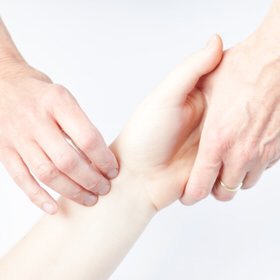
Acupuncture
Herbal medicine
Homeopathy
Naturopathy / Nutrition
Osteopathy
Qi Gong
Yoga
Many practitioners can offer the best care and attention in consultation sessions, but most are also happy to share information, have website blogs or YouTube links, plus the Ainsworth homeopathic telephone helpline, which can be accessed for free.
The information I provide below is only a guide and is intended as part of a continuum of resources offered by myself and friends and colleagues at Shine, including the Naturopath,
Lloyd Gee and Acupuncturist, Marian Fixler.
Osteopathic Principles
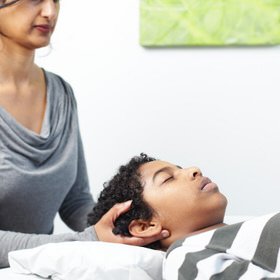 Osteopathy is rooted in the philosophy of medicine and nature and regards the body as intelligent, dynamic with the inherent capacity to self-regulate and repair. Rather than focus solely on symptoms, osteopaths combine scientific medical knowledge with the art of palpation (touch), to access the underlying health, unique to that person.
Osteopathy is rooted in the philosophy of medicine and nature and regards the body as intelligent, dynamic with the inherent capacity to self-regulate and repair. Rather than focus solely on symptoms, osteopaths combine scientific medical knowledge with the art of palpation (touch), to access the underlying health, unique to that person.
Cranial osteopaths can be seen as artisans, placing skilled, perceptive hands on the body and head, for quiet listening and sensitive, refined palpation. Knowledge of anatomy is used to build an internal ‘picture’ of the patient, in such a way, as to detect where barriers to recovery may lie. Using our hands and awareness, we provide a ‘fulcrum’ or space for the body to respond in its innate functional way, via the tissues, breath, drainage and fluid flow and so allow good function and ease or ‘expression of health’ to return. For good health, we need, essentially, to balance our body and mind, with our environment, both internally and externally.
With Covid-19 – The Same Osteopathic Principles Apply:
1. Reduce inflammation: all ill health has an underlying inflammatory marker. For covid this can be an inflammatory response in the respiratory small blood vessels, the gut or the brain.
2. Balancing the breath: which means reducing stress (sympathetic response) patterns – emotional stress, physiological stress and environmental stress, by having treatments, improving the respiratory mechanics and practicing breathwork, mindfulness or meditation.
3. Encourage good blood flow: the movement of blood to supply cells with oxygen and nutrition and remove excretory products from circulation is a fundamental osteopathic principle called the ‘rule of the artery’.
4. Encourage good lymphatic drainage: to maintain effective immune function.
With osteopathic treatment, all these factors are addressed.
As a naturopathic osteopath, I am also qualified to advise on nutrition, supplements, remedial exercise and breathwork.
Self-care guidelines based on Osteopathic Principles: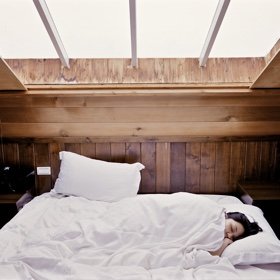
1. Reducing Inflammation
Sleep: getting at least 7+ hours of restful sleep each night, so the body can repair and rejuvenate. Avoid screens prior to bed and be intentional about sleep hygiene.
Nutrition is key: reduce or cut out processed foods, refined carbohydrates, sugar and dairy (except yoghurt), as they are highly inflammatory in the gut. Increase the range and quality of vegetables, wholefoods such as beans and lentils, bone broths and fermented foods.
Take a tablespoon of organic apple cider vinegar (with ‘mother’ culture) every morning.
Vitamin D3 supplement: especially important during the winter months (eg. Solgar). For healthy immune function and muscle and bone health. https://www.nice.org.uk/advice/es28/chapter/Key-messages
Vitamin K2 supplement: acts with Vit D for efficient calcium absorption and arterial flow. An anti-oxidant which protects cell membranes from damage by excess free radicals.
Omega fatty acids with EPA and DHA have high anti-inflammatory properties (eg. Biocare).
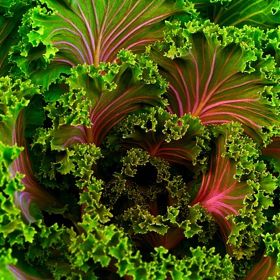 Magnesium high in dark chocolate, avocado, lentils, chickpeas, soybeans, tofu, pumpkin seeds, chia seeds, buckwheat, quinoa, banana, leafy greens such as kale, spinach, turnip greens, mustard greens, almonds, Brazil nuts (also great source of selenium).
Magnesium high in dark chocolate, avocado, lentils, chickpeas, soybeans, tofu, pumpkin seeds, chia seeds, buckwheat, quinoa, banana, leafy greens such as kale, spinach, turnip greens, mustard greens, almonds, Brazil nuts (also great source of selenium).
Zinc for healthy immune response and reducing inflammatory processes – high in pumpkin seeds, oysters, brown rice and take as a supplement (eg. Biocare).
Quercitin: an important antioxidant and anti-inflammatory: found in red wine, onions, apples, berries, green tea, buckwheat tea. Supplement (eg. Higher Nature).
Turmeric: add to foods. Use one slice of turmeric and ginger root, as a tea with hot water.
For specific advice on supplements and nutrition:
https://www.shineholistic.co.uk/services/nutrition/
https://www.shineholistic.co.uk/services/naturopathy/
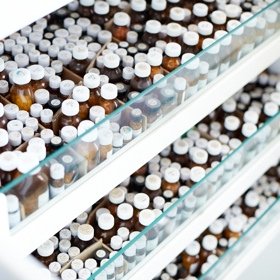 Homeopathic remedies need to be precisely matched according to each person’s specific symptoms, so very important to consult and get advice first from a homeopath. Examples: Aconite or Belladonna for sudden onset fever; Arsenicum or Bryonia for chest pain/cough; Eupatorium for deep bone ache. Obtain personal advice from a homeopath or call Ainsworth Homeopathic Pharmacy helpline on 020 7935 5330 for guidance on alleviating any range of symptoms, including fatigue, digestive, respiratory and emotional issues. https://www.ainsworths.com/
Homeopathic remedies need to be precisely matched according to each person’s specific symptoms, so very important to consult and get advice first from a homeopath. Examples: Aconite or Belladonna for sudden onset fever; Arsenicum or Bryonia for chest pain/cough; Eupatorium for deep bone ache. Obtain personal advice from a homeopath or call Ainsworth Homeopathic Pharmacy helpline on 020 7935 5330 for guidance on alleviating any range of symptoms, including fatigue, digestive, respiratory and emotional issues. https://www.ainsworths.com/
2. Balancing the Breath
In order to protect the airways and free up the structures of respiratory system, we need to work on the sinuses, throat, ribs, sternum, lungs, diaphragm and the associated nerve and blood supply.
Steam inhalation
Add a sprig of fresh thyme and 5 drops of essential tea tree oil to bowl of hot water. Carefully lean over the bowl, with a clean tea towel over your head, as you inhale for a few minutes. Very effective simple technique to clear your airways and provides protective anti-inflammatory and anti-viral support to the respiratory tract. Especially effective on waking or before bed and on returning home, after being out.
Apply gentle pressure using pads of your thumbs, pressing in all around the toes, the balls of the feet and over top half of the feet and around ankles which have points corresponding to respiratory and lymphatic channels. Regularly working into your feet with gentle pressure is very therapeutic. Can use arnica cream or Traumeel herbal cream to assist with the healing process. A treatment with a qualified reflexologist is highly recommended.
https://www.shineholistic.co.uk/services/reflexology/
Sinuses
• Tapping – gentle taps with the pads of your fingers, along the forehead, cheeks, jawline and just under the collarbone.
• Suboccipital release: lay on your back and support the back of your head with your fingers. Apply gentle pressure just under the occipital bone and top of neck, at back of the head. This encourages release of the vagus nerve, which regulates breath and digestion and heart-rate.
• Stroking – gentle long strokes using fingers along face, neck and down toward the collarbones to encourage drainage of the sinuses.
Meditation, guided breathwork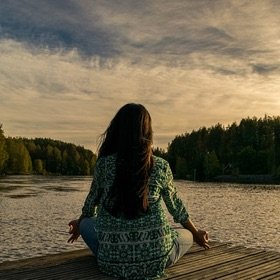
Find a way to keep a simple practice of quiet time to rest the mind and focus internally on the breath. There are lots of online guides. Most simply is to sit in a place comfortably and allow yourself time to just be with yourself. You can keep your eyes open or closed, with no expectation. Use calming music or just be aware of sounds around you. Allow thoughts to pass without following them. Return to your sense of gentle intake and out-take of breath.
3. Blood flow through gentle movement
If you have low energy and feel in a double bind: unable to exercise, but more tired and emotionally low because of lack of activity, please read this list as a guide to breath-work, postural release and relaxation with links to yoga and qi gong short videos for support.
Just a few minutes interspersed twice a day or alternate days, and trying one or two movements at a time. If you are particularly low in energy – a restorative child-pose on its own is very useful. While other suggested movements can be incorporated over time.
Try a combination or alternate sessions of Qi gong and Gentle restorative yoga
• Warming hands by rubbing palms together for a minute
• Slow arm swings from side to side, to loosen the neck, shoulders, ribs, upper body and hips
• ‘Tapping’ over face and ‘cupping’ over arms and legs to gently stimulate the blood flow
• Neck and shoulder release, shrugging shoulders up to ears and rotating shoulders back
• Forward bend with arms dropping down toward feet – can do seated or standing. These gentle spine roll downs help to loosen tension in the vertebrae and improves blood supply to the head
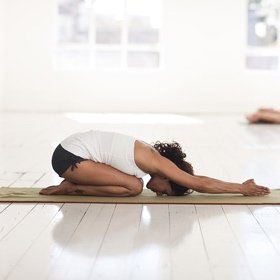 • Child pose – this simple forward head down in kneeling position calms the sympathetic nervous system along the sides of the ribs in the thorax, while also relaxing the abdomen and lungs.
• Child pose – this simple forward head down in kneeling position calms the sympathetic nervous system along the sides of the ribs in the thorax, while also relaxing the abdomen and lungs.
This link has an excellent range of supported yoga postures specifically for covid-care:
https://iyengaryoga.org.uk/covid-19-a-suggested-recovery-programme/
Qi gong with Kseny for lungs and immune system:
https://www.youtube.com/watch?v=aZL7GXLSSx4
Qi gong 20 minute routine:
https://www.youtube.com/watch?v=cwlvTcWR3Gs
4. Lymphatic drainage
Good lymphatic drainage technique with massage, osteopathic treatment or gentle movement can enhance immune function and improve circulatory health.
• Shoulder shrugs, rolling shoulders back, with arms softly bent at elbows and rotating back.
• Self-massage of long upward strokes, working up from sides of ribcage, over the chest and up to shoulders to encourage lymph return to thoracic duct near left and right armpits and above the collarbone.
• Stroke sides of neck down to shoulders and under collarbones – press along tender points.
• Assisted gentle neck stretches using your hand on side of head to sidebend at the neck.
• Rock ankles by pointing toes towards and away, to stimulate lymph return from legs.
• Legs up against wall to encourage drainage from legs back to pelvic ducts
• ‘Lymphatic chest pump’ – an osteopathic technique using hand on sternum, pressing down with reinforced hands on each outbreath progressively, until the third in-breath, when hands are quickly lifted, to decompress the chestbone and allow effective lymph suction and motion, along a pressure gradient – I am happy to guide anyone interested in this technique, to ensure safety.
Improving immune function and lymphatic drainage with Yoga-based postures:
All these poses are effective and can be found online or guided with a yoga practitioner.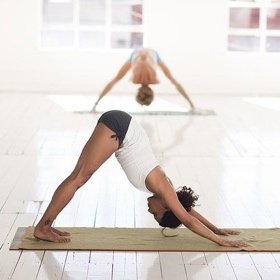
• Slow spine roll downs: taking head toward the feet allows drainage of lymph toward nodes
• Laying sideline, arms out with palms together, then lifting upper arm up and over to open wide to opposite side, with pelvis and head gently turning to follow the direction of the hand.
• Cat and cow pose – opens up the chest and upper back and shoulder and throat area.
• Dog pose and Bridge pose encourage drainage of pelvic and thoracic lymph ducts.
https://www.thelymphaticmessage.com/videos
All the recommendations above can be read as pointers toward maintaining our health during the pandemic and a path to improve health for those who are searching for ways to fully recover from covid and/or the repercussions of long covid. Please email me if you have any questions or would like further guidance on any of the suggestions.
Email Rehana
Rehana Kapadia, BA (Hons), MA, BSc (Hons) Ost Med, MSc Paediatric Ost, DO, ND, MSCC
Cranial Osteopath, Naturopathic Osteopath
References
1. Radio 4: File on 4 The Long Road to Recovery with Dr Adam Rutherford and Dr Nisreen Alwan (29 September 2020)
https://www.bbc.co.uk/programmes/m000mczc
2. https://edition.cnn.com/2020/07/19/health/long-covid-italy-uk-gbr-intl/index.html
3. https://www.bsrm.org.uk/downloads/covid-19bsrmissue1-published-27-4-2020.pdf
5. https://www.postcovidcare.org/
6. https://cks.nice.org.uk/topics/coronavirus-covid-19/


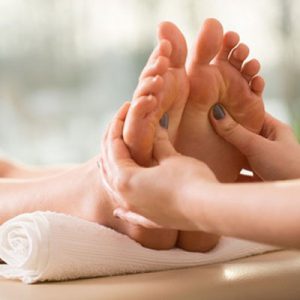 Reflexology
Reflexology
